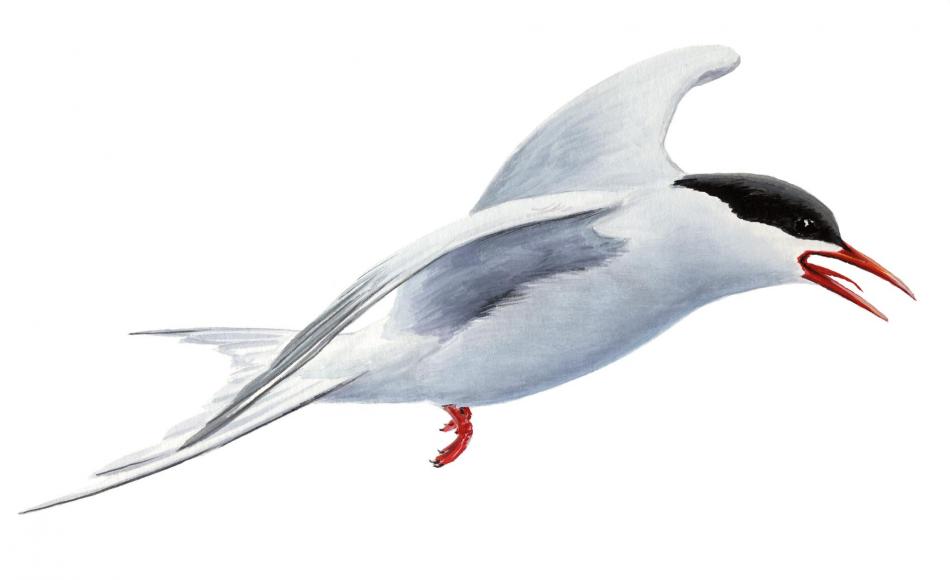Image

The arctic tern undergoes the longest migration than any known animal on the planet. Every year they travel about 70,900 km (44,300 miles) from the Arctic to the Antarctic and back again. One chick ringed on the Farne Islands in June 1982 was found in Australia in October, travelling about 22,000km (13,640 miles) in just 3-4 months.
| Average Length: | 34 cm |
| Average Weight: | 110 g |
| Wingspan: | 80 cm |
| Diet: | Fish, crustaceans, insects |
| Est. population around Iceland: | ~ 200,000 – 300,000 pairs |
| Residence Period: | Mid April to Late September |
| Nesting habitat: | Coastal tundra, lakes, rivers |
| Nesting Period: | Mid May to Late July |
| Clutch size (No eggs): | 1-2 |
| Incubation time (days): | 20-24 |
| Fledging time: | 21-24 |
| Typical life span (years): | 13 |
| Age at first breeding (years): | 4 |
| IUCN world Status: | Least concern |
| Major Threats: | Climate change, predation, pollution, severe weather |
| Other Names: | Kría, Havterne, Lapintiira, Küstenseeschwalbe, Sterna codalunga, Rybitwapopielata, Charránártico, Noordse stern, Sterne arctique, Sarkicsér, Rødnebbterne, Andorinha-do-mar-árctica, Silvertärna |




